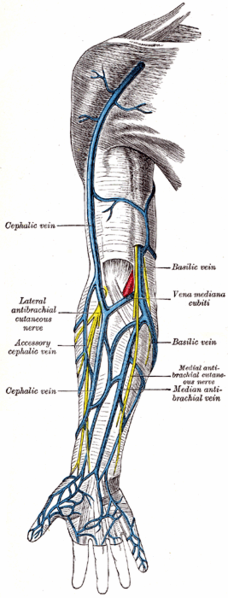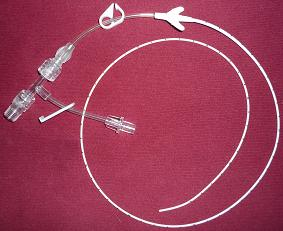PICC Line Placement
What is a PICC line and why are they used?

A Peripherally Inserted Central Catheter (PICC line) is used in various cases when there is a need for prolonged vein access, including hemodialysis, long term antibiotic and chemotherapy, total parenteral nutrition, etc.
It can be used to measure CVP (Central Venous Pressure) which is a good indicator of a blood pressure in right atrium and vena cava.
It insertion has become a procedure of choice compared to the surgical placements of the central venous catheters.
What are the main advantages?
Main advantages for using PICC line are:
- higher success rate,
- fewer complications, compared to surgical approach,
- precise catheter placement,
- shorter duration of the procedure
- less discomfort for the patient as well as
- faster recovery after intervention.
Where are the lines usually inserted?
Usual sites for insertion are through cephalic, basilic and brachial veins (see image on the right) in the upper limb.
Who inserts a PICC line?
An interventional radiologist inserts a PICC line catheter through one of the veins and guides it through larger veins toward the heart. Greater precision is achieved by usage of ultrasound and fluoroscopy during the insertion. Learn more about what to expect on the day of your procedure here.

How long is the line left in place?
The line is generally left in place up to 30 days depending on the indication for insertion and the type of the catheter used.
How is it removed?
Removal is usually simple and can be done at the bedside. The insertion site is bandaged with sterile gauze and needs to be kept dry for a few days to help the healing of the wound.
After removal of the catheter, the vein is preserved and can be used in future if needed.
Author: Dr John Vrazas MB,BS FRANZCR
